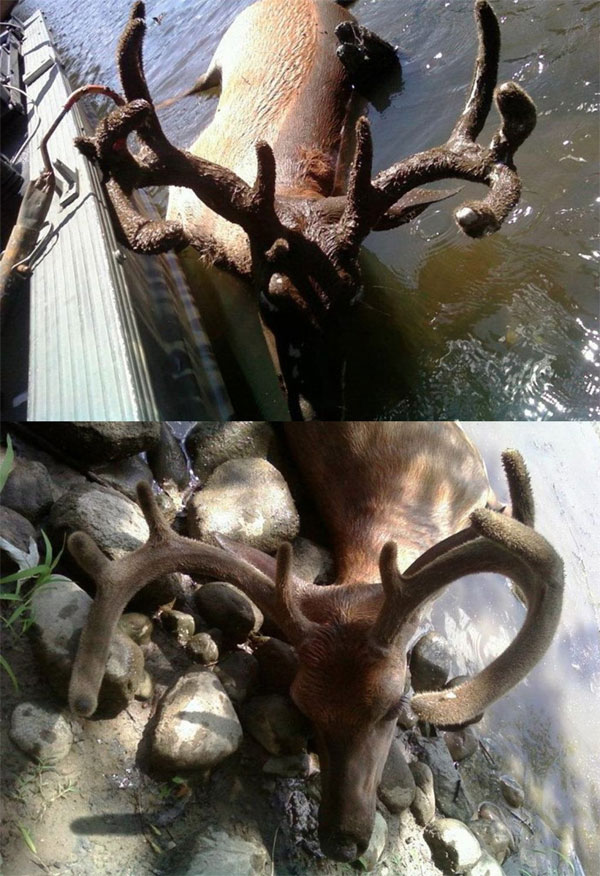LAST UPDATED: May 1st, 2015
EHD and bluetongue are two terms that every deer hunter fears. Unfortunately for some hunters in Ionia and northern Branch counties of Michigan, this is becoming reality. The Department of Natural Resources Wildlife Disease Lab and MSU Diagnostic Center for Population and Animal Health announced that EHD has been confirmed as the cause of death in deer for these counties.
Deer of any age, size or sex can be affected by EHD.
The often-fatal viral disease, found in wild ruminants, causes extensive internal bleeding within deer and is transmitted by a midge, or type of biting fly. A constant characteristic of the disease is its sudden onset. Deer lose their appetite and fear of humans, grow progressively weaker, salivate excessively, and finally become unconscious. Due to a high fever, infected deer often are found sick or dead along or in bodies of water. There is no evidence that humans can contract the EHD virus.
EHD outbreaks killing deer in Michigan have occurred in isolated areas almost every year since 2006. Prior to 2006, EHD outbreaks in Michigan occurred in 1955 and 1974. The estimated mortality has varied from 50 to 1,000 deer per year in the affected areas.
“Due to the prolonged, dry, hot weather this year, we are not surprised to see EHD emerge again,” said Tom Cooley, DNR wildlife biologist and pathologist. “Mortality numbers will depend on how widespread the disease is — die-offs usually occur within one watershed area. If multiple watersheds are involved, the total mortality is higher.”
There is no known effective treatment for, or control of, EHD. The disease has been seen for decades in most areas of the United States, especially the southeast states and Texas. It has been less commonly observed in Great Lakes and New England states, although it has now been detected in Michigan in six of the last seven years.
Where EHD is more common, deer have built up antibodies to the disease and population recovery does not take long. Michigan deer do not have the benefit of these antibodies. Losses may be severe but are typically restricted to localized areas. Population recovery may take longer than has been experienced in other states.
Deer who die of EHD are commonly found in or near water sources, as the diseases causes the animal to run a high fever and seek out water in order to cool down.
Department of Natural Resources Wildlife Division staff members are developing plans for assessing the extent and impact of losses in the affected areas. Property owners who discover dead deer they suspect died of EHD in the vicinity of Branch County should call the Crane Pond field office at 269-244-5928, and in Ionia County contact the Flat River field office at 616-794-2658. In other areas of the state, reports of suspected EHD outbreaks should be made to the nearest DNR office.
It is acceptable to allow natural deterioration processes to dispose of deer that die from EHD. Natural deterioration will not spread the disease or cause other disease outbreaks. Property owners are responsible for the proper disposal of carcasses that they wish to remove from the site. Carcasses should be buried at a sufficient depth so that no parts are showing above ground. Carcasses also can be disposed of at landfills that accept household solid waste.
For more information on EHD, visit www.michigan.gov/wildlifedisease.







